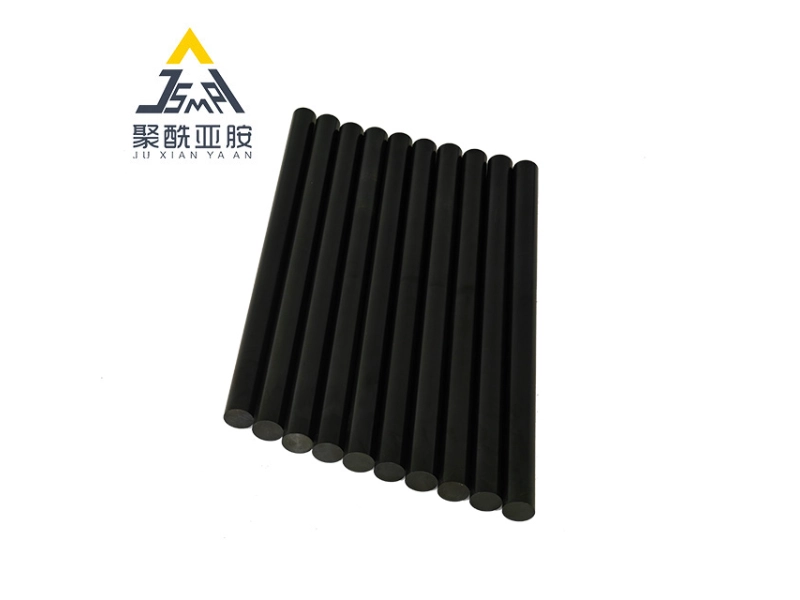Lately, the materials used in high-performance applications have undergone a major transformation. One particular material that has emerged as a revolutionary solution is electrically conductive polyimide resin rods. Known for their remarkable thermal stability and superb electrical conductivity, these rods are revolutionizing industries that demand reliability and performance. From cutting-edge manufacturing to high-tech electronics, conductive polyimide resin rods are establishing themselves as essential components in modern technology.
Especially in the aerospace industry, where capabilities and safety are paramount, the adoption of high-performance polyimide rods is rapidly gaining traction. These rods provide the necessary strength and lightness properties that are crucial for aerospace applications, enabling the design of more efficient and long-lasting aircraft components. As the requirement for advanced materials continues to grow, conductive polyimide resin rods stand at the leading edge, offering exceptional advantages that help engineers explore new frontiers of what is feasible in aerospace design and beyond.
Summary of Conductive Materials
Electrically-Conductive resins have become as a vital substance in various high-performance uses, particularly in industries that demand high thermal and electrical properties. These materials are synthesized through the polymerization of polyimide precursors, resulting in a strong material that not only shows significant flexibility but also superb chemical resistance. Their distinctive characteristics permit them ideal for applications in environments where traditional materials may struggle.
In the aerospace sector, conductive polyimide rods are crucial due to their ability to endure extreme temperatures while offering electrical conductivity. Such attributes are crucial for components that require consistent performance in the face of thermal stress and varying environmental conditions. The light nature of polyimide materials contributes to the overall efficiency of aircraft and spacecraft, making them a preferred choice for manufacturers focused on enhancing performance while minimizing weight.
Furthermore, the flexibility of electrically-conductive polyimide resins allows for modification to meet particular operational requirements. By adjusting the composition and processing conditions, manufacturers can tailor these materials for specialized uses, ensuring optimal performance in fields spanning electronics to automotive and medical devices. As industries continue to innovate, the demand for high-performance polyimide rods is forecast to grow, driving advancements in material science and engineering.
Applications in the Aerospace Industry
Conductive polyimide resin rods are increasingly gaining increased traction in the aerospace sector due to their low-weight properties paired with superior thermal stability and mechanical strength. https://hallbeech9.bravejournal.net/a-fate-of-electronic-technology-investigating-conductive-type-polyimide-resins are utilized in multiple components that require reliable electrical conductivity while preserving the integrity of structural materials. The aviation sector requires materials that can endure extreme temperatures and harsh operating conditions, making this material an ideal choice for certain applications like insulation supports and brackets.
In addition to structural applications, conductive polyimide rods play a vital role in the manufacturing of sensors and actuators utilized in aerospace systems. Their ability to effectively transmit electrical signals while withstanding damage from environmental factors places them as a favored material for key aerospace technologies. These rods ensure that the electronics onboard airplanes operate effectively, which is essential for flight safety and performance.
In addition, the low-weight nature of electrically conductive polyimide resin rods plays a significant role to overall fuel efficiency in aviation. By replacing heavier metal components with these high-performance rods, manufacturers can minimize the aircraft’s weight, leading to lower fuel consumption and lowered carbon emissions. This aligns with the aviation industry’s ongoing efforts to enhance sustainability while meeting the rising demands for performance and safety.
Benefits of Polyimide Rods
Electrical polyimide bars offer superior thermal stability, making them ideal for applications where high temperatures are a factor. Their ability to maintain mechanical properties at high temperatures allows them to be used in environments that alternative materials cannot endure. This characteristic is especially beneficial in the aerospace, in which components are often exposed to extreme heat during use.
Another major benefit of polyimide rods is their outstanding electrical properties. These rods provide excellent conductivity while maintaining a lightweight structure, making them suitable for high-tech electronic applications. The mix of low weight and conductivity is essential in aerospace applications, where every gram counts and effective operation is essential.

Additionally, polyimide resin rods exhibit exceptional chemical resistance and strength. They can endure exposure to various substances without degrading, which ensures durability and reliability in harsh environments. This resilience makes them an excellent choice for producing critical components in sectors that require substances to perform under challenging conditions.
Prospective Trends and Innovations
The future of conductive resin rods is encouraging, driven by developments in material science and design. As industries increasingly seek light durable, and high-performance components, these rods are set to play a crucial role. Improvements in production processes, such as additive manufacturing and enhanced curing methods, are expected to boost the attributes of these materials. This will lead to greater customizability, allowing for the creation of rods that fulfill defined operational needs in various strict environments.
In the aerospace sector, the push for greater efficiency and sustainable materials is encouraging researchers to investigate innovative blends of polyimide materials that incorporate nanoscale materials and other conductive substances. These developments aim to boost not only conductivity but also heat resistance and robustness. As the aircraft field continues to seek reduced weight solutions without sacrificing safety or performance, the role of high-performance polyimide rods in aircraft designs and spacecraft designs will increase significantly.
Beyond aviation, other sectors such as electronics and the automotive sector are beginning to recognize the promise of conductive resin rods. The trend towards smaller sizes and better performance in electronic products aligns seamlessly with the properties of these materials. Future advancements may also concentrate on incorporating advanced technologies and sensors within conductive rods, facilitating the development of versatile components that aid in the evolution of advanced electronics.
